- Home
- About
- Benefits & Services
- State Veterans Homes
- Nevada Veterans Memorial Cemeteries
- Community
- News
- Suicide Prevention
- Donate
- Fallen Heroes
- Nevada’s Veterans Memorials
- Calendar/Events
- Nevada Transition Assistance Program (NVTAP)
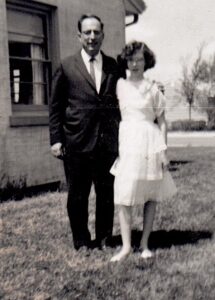
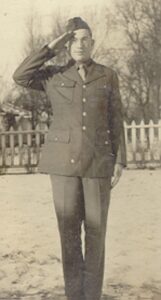
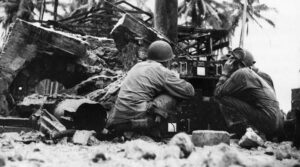
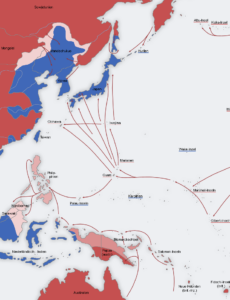
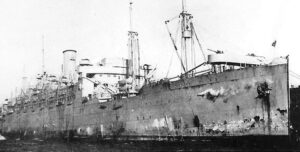
As Seen in the Nevada Appeal and written by Steve Ranson, Nevada News Group.
He enlisted barely out of high school and into the Army during World War II with men his age with many of them serving in the Pacific Theater until Japan officially surrendered aboard the USS Missouri on Sept. 2, 1945. The allies culminated four years of island hopping before two B-29 bombers dropped atomic bombs on Hiroshima and Nagasaki, respectively, that led to the war’s end.
Charles E. Youmans, whose daughter Anita Trone lives in Fernley but has spent many years working part time for Kent’s Supply in Fallon as the controller, shared her father’s accounts of horrifying battles and finally of the soldiers’ relief when Japan issued an unconditional surrender almost one week later after the second atomic bomb fell on Nagasaki. Four days later on Aug. 15, Youmans said Gen. Douglas MacArthur’s headquarters selected the 1st Cavalry Division to accompany the supreme leader to Tokyo as part of the Eighth Army’s occupation of Japan. On Aug. 25, Youmans and his comrades boarded a ship in the Philippines and began their northeasterly 2,000-mile journey toward Tokyo Bay.
“As part of a large convoy, we sailed up Tokyo Bay,” Youmans wrote. “We moved into Yokohama Harbor past the big battleship, U.S.S. Missouri. The date was Sept. 2, where, in a little while, Gen. MacArthur would receive the signatures of the Japanese surrender. On Sept. 8, we entered Tokyo, another first. The 1st Cavalry Division — first in Manila and first in Tokyo.”
Youmans was one of the lucky soldiers who survived the many bloody battles in the Pacific over an 18-month span. In June 1943, his unit, the 99th Field Artillery, 1st Cavalry Division, departed Fort Bliss, Texas, and headed to Camp Stoneman, Calif., a military staging area located in Pittsburg. On July 3, Youmans’ unit boarded the troop ship SS George Washington, sailed under the Golden Gate Bridge into the Pacific Ocean and changed its course to a southwesterly direction to the western coast of Australia where the soldiers would train for the next six months in jungle and amphibious operations at Camp Strathpine, 15 miles north of Brisbane.
The SS Washington and another troopship, the SS Monterey, docked in Brisbane on July 26. Shipped as a light infantry division of 15,000 men, the 1st Cavalry, which was then assigned to the Sixth U.S. Army, used vehicles instead of horses.
War’s devasting toll first confronted Youmans and the other cavalry soldiers once they landed on Ore Bay, New Guinea
“We had guards to guard our camp while we were sleeping,” Youmans recalled. “There were a few scattered Japanese hiding in the jungle. In that part of New Guinea they were defeated, but some escaped into the jungle. One night, some of them sneaked past the guards and got to the hammocks and killed one of our men. Japanese were very cruel. They cut off the head of the soldier that they killed. After a brief battle, they were driven back into the jungle.”
After New Guinea, the 1st Cavalry sailed toward the Admiralty Islands and invaded Los Negros, also Manus Island, of the Admiralties on Feb. 5, 1944. Youmans said the soldiers advanced to Hyane Harbor to capture the Momote Air Strip on March 1. Youmans’ unit, Battery C Field Artillery, 99th Field Artillery, encountered a number of horrifying encounters with the Japanese during March.
“One night, I was in my foxhole when an enemy plane came over real low,” Youmans described. “I got down in my foxhole as low as I could get. Two of our men on a machine gun opened up at the plane. The bomb that was dropped landed right on the men and machine gun. The next morning, we picked up pieces of the machine gun and the soldiers. Of the two men, there wasn’t enough left to fill up a helmet with the pieces. War is terrible and heartbreaking.”
Youmans said the campaign ended for Los Negros Island, but the unit then headed to Manus Island on March 30. After much fighting, he said the campaign for Admiralty Islands was over within two months. According to Youmans’ accounts, the next major operation began when the unit landed near Tacloban on the Philippines’ Leyte Island. With battles still raging on Leyete, part of the 1st Cavalry, including Battery C, 99th Field Artillery, left by boat on Dec. 5 for Samar Island in the Philippines where Youmans encountered some of the worst fighting of the war. The Leyte-Samar campaign ended Jan. 4
“The Luzon campaign began on January 27, and we were on our way to Manila and on Feb. 3, we rolled into Manila,” Youmans wrote. “At the Santo Tomas internment camp in Manila, the 1st Cavalry Division liberated the 3,700 internees of Santo Tomas. The Luzon campaign was officially declared finished on June 30.”
The next major news Youmans and his Army buddies heard came in August with the dropping of the atomic bombs on the Japanese mainland.
When the war ended, Youmans didn’t re-enlist and returned to the United States. By Oct. 22, he was a civilian again. The First Cavalry Division, though, stayed on occupation duty in Japan from 1945 to 1950 with new personnel and re-enlistees.
“When I got out of the Army, I was shell shocked. I didn’t know it myself, but grandmother noticed I jumped at every little noise and was always on edge,” Youmans remembered. “She told Ray Wood about it, and she asked him to let me work in the greenhouse out in the country away from the noise of the city. It was good for me and I enjoyed it. The land where my house is (built) in Fond du Lac (Wisconsin), Ray Wood sold to me for $1 and Bob Piehl helped me out a lot.”
In 1948, he married Lillian Fitzwilliams, “the prettiest girl I’d ever seen,” Youmans would occasionally say.
For the next 50 years, Youmans didn’t talk too much about the war, but Anita could tell the effects remained etched with her father.
“Growing up, I remember my father sitting in front of our small screen, black and white TV. He often watched WWII documentaries and as he did, he would cry – sometimes with just tears – sometimes with sobbing. I remember asking him, ‘What’s wrong daddy?’ He would say, ‘It just makes me sad honey.’”
Trone — whose late husband Orlis penned a column for the Lahontan Valley News and Nevada Appeal — wrote a response to the editor of the Vallejo (California) Times about a revisionist view of World War II and the dropping of the atomic bombs. Youmans later responded to Orlis’ letter, saying war is terrible. He referred to the incident when the Japanese plane dropped a bomb killing several of his comrades on Los Negros. Later, Anita discovered one of the killed men was her father’s best friend.
“Imagine being just 20 years old and having to pick up the scattered parts of your best friend,” Anita said.
After writing his letter to Orlis, Youmans reflected on his time in the Pacific, but he also told of his sorrow.
“After all these years, there is still sadness in my heart for those who didn’t make it,” Youmans added. “Most of them were in their 20s with their whole life ahead of them. If the war would have gone on, I don’t know if I would have made it back. I don’t know why I made it and so many didn’t.”